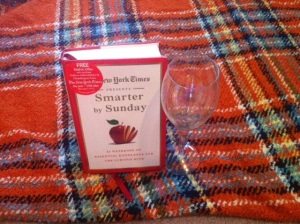I am finding that all writing styles could have a week devoted entirely to them. I am glad that I continue to be educated about all the history behind the various methods. This week is English poetry so without further ado…….
The earliest forms of poetry still available for reading are written in “alliterative verse form”. This form means that the sounds at the beginnings of words are repeated in each line. The subject matter typically centered around heroic deeds of kings and warriors. A great example of this poetry is Beowulf. Three other forms came about during this time period. They are romance, elegy (a mourning poem) & allegory. Geoffrey Chaucer is considered to be the first great English poet. His most notable work is the Canterbury Tales. There is a period labeled the Tudor period (1485-1603), during which English as a language more fully developed and allowed writers to express more humanist ideas. During this time Edmund Spenser produced his work Faerie Queene. Spenser also invented a nine line stanza bearing his name.
I found it interesting that there are so many styles. Classes in poetry only cover broad strokes and don’t tend to drill down into the mot minute of influences. Metaphysical poetry is based on intellectual and spiritual reading. It was originated by John Donne during the 17th century. Then there are the Cavalier poets, who modeled their writing after the writings of Ben Jonson. These poets supported King Charles I and the content focused on natural things and women. John Milton, by far one of the greatest writers in history, produced Paradise Lost during this time frame.
Once the 18th century hits, Romantic and Victorian writers became prominent. The Romantic age saw three great writers all of who passed away a relatively early ages. Lord Byron, Percy Shelley and John Keats all pushed the envelope with their writing. The subject matter included impulses, individualism and emotional experience.
The Victorian era was short lived, only lasting from 1837-1901. Alfred, Lord Tennyson along with Robert Browning, Elizabeth Barrett Browning and Matthew Arnold produced a number of works in this very short time period. Content tended to form around religion but viewpoints varied based on the writers personal experiences and beliefs.
During the end of the Victorian era, the Decadent writers started producing work that reflected, “art for arts sake”. Oscar Wilde falls into this category and his novel, The Picture of Dorian Gray is true to the ideals of a Decadent writer. World War I ended the Victorian era but not before Rudyard Kipling was able to move poetry in a new direction, documenting a more patriotic setting and writer.
Coming Up Next Week in Smarter by Sunday: Great American Writers
Wine Pairing: Since we will be reading this book over the course of a year I am pairing this book with my favorite wine, Gallo Café Zinfandel. It’s a inexpensive red wine (about $7 for a 75ml bottle) but taste delicious. It’s a table wine so no need for chilling and aerating needs are minimal. It’s not the typical super fruity and light zinfandel. Café Zifandel has more depth to it but not so much that it nears a Pino Noir. This wine is great for sipping and sharing. It’s one of my favorites and I’m excited to share it with all of you.
You can find more information and reviews about the wine at http://www.gallofamily.com/our-wines/caf%C3%A9-zinfandel.html.

Leave a comment